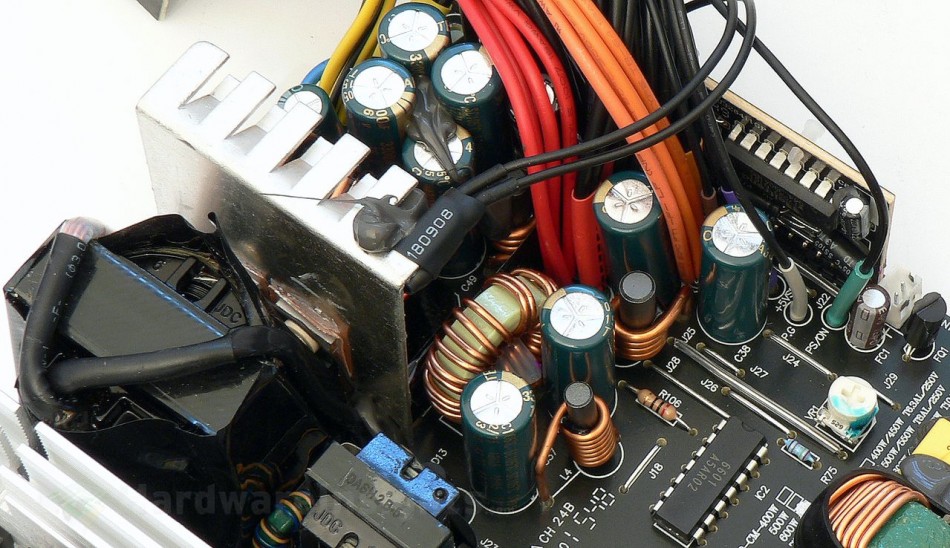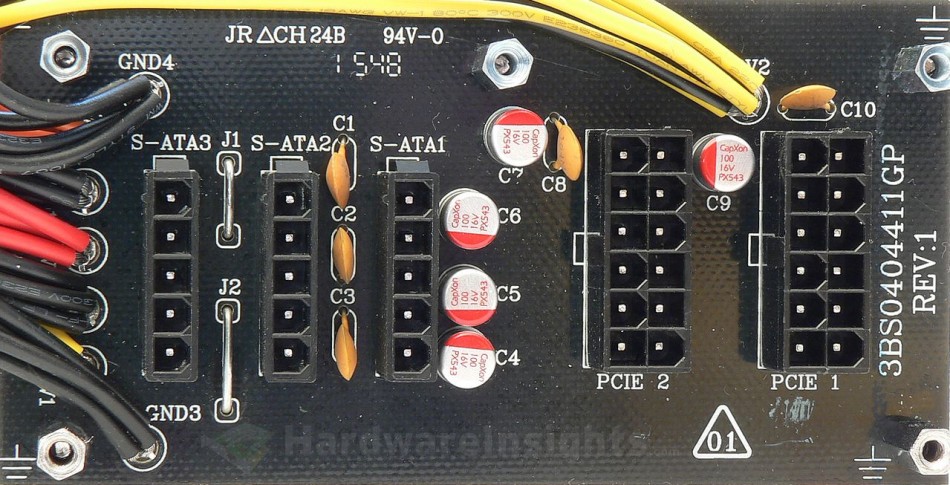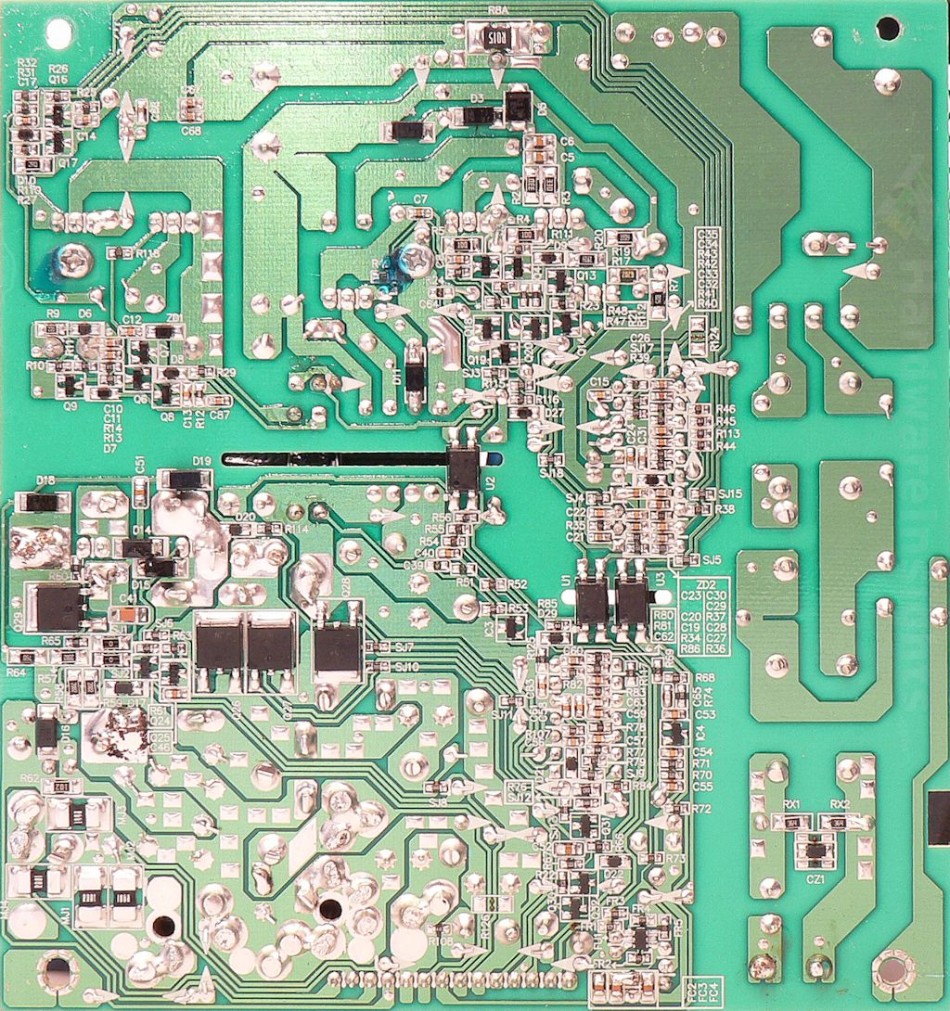Contents
- 1Introducing the Be Quiet! Pure Power 9 CM 600 W (L9-CM-600W)
- 1.1Packaging and accessories
- 2Connectors & cabling
- 2.1Casing & cooling
- 3Input filtering
- 4Primary side
- 4.1+5 V stand-by rail
- 5Secondary side
- 5.1Build quality
- 6Load testing
- 6.1Loading +5 V SB
- 6.2Voltage hold-up time
- 6.3Combined loading
- 6.4Combined loading ripple
- 6.5Crossloading, overloading
- 6.6Crossloading, overloading ripple
- 6.7Fan speed, temperatures and noise
- 7Conclusion and evaluation
- 7.1Thanks
- 7.2Discussion
Secondary side
The secondary side is highly familiar. Over most of the previous models I think we have slightly bigger heatsink for the +12V rectification transistors this time. Transistors in TO-220 package are used which I have been unable to identify because of confined space. In the original Raider RA550 are two IRF1018EPbF so I would expect similar part here. The +3.3 and +5V rails are then rectified by two pairs of SMD transistors (each) on the soldering side. Those are Infineon IPD060N03L G (50/350 A at 30 V, RDS(On) 9 mΩ at 30 A and VGS of 4.5 V, 6 mΩ at 10 V) in TO252-3 package. The “6601” microchip is used once again to drive the transistors.
The filtering consists of more Teapo SC 3300/10 and 3300/16 and also a single Taicon PW 1000/16 for −12V rail. Only on the modular board there are a few CapXon 100/16 polymers (one for +3.3 and +5 V rails, three for +12V rails). There are indeed two rails, the first one for Main ATX and all the peripherals, the other one for ATX 12 V and all the PCIe outputs. The second rail will see much more power draw with both the ATX 12 V and the PCIe so it would make more sense to put the ATX 12 V on the first rail. Groups of 18AWG wires are used to transfer the power to the modular board.
You may notice the thermistor attached to the secondary heatsink via heatshrink. Be Quiet! actually states the L9-CM-600W has two temperature sensors, however, I have not found any other. While I am not implying it means there is really no other, the reality is no Aurum or Raider units I have seen to date had any kind of OTP. Also from my observation, they may not even regulate their fan at all (remember the Antec EA-550). Not to mention that if they do, there is very minor chance that being based on any kind of temp measurement. So I think now it finally has some temperature control and also OTP, but just over that single sensor. Other than that we have the Weltrend WT7527 secondary monitor for the ordinary things (UVP, OVP, PWR On and PWR Good).
Build quality
As usual, I’ll focus on the overall build quality and other things like electrical safety here, as the quality of the components that were used was already discussed before. The separation between the primary and secondary sides is good. The soldering is mostly good though there are some joints which do not seem completely OK. It is mostly clean but I found couple manually-resoldered joints which have not been cleaned afterwards.
Reasonable quantities of silicone have been used to fix the components in place, especially in the input filtering section. Electrodes are mostly precisely trimmed or at least bent into safe direction. I only found three tiny solder balls which may be also attributed to the fact conductive paths are basically not reinforced at all. Overall the result is nice it will be minus 4 points for L9-CM-600W.




